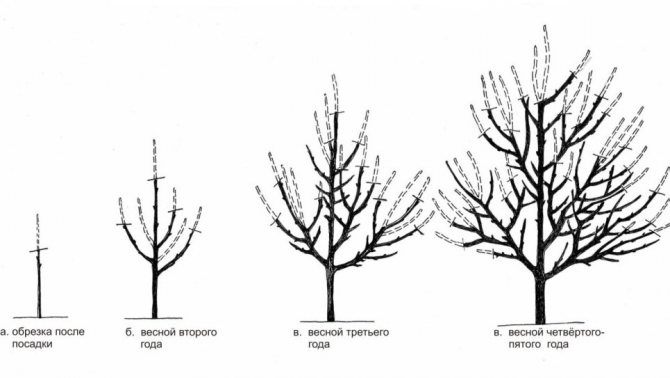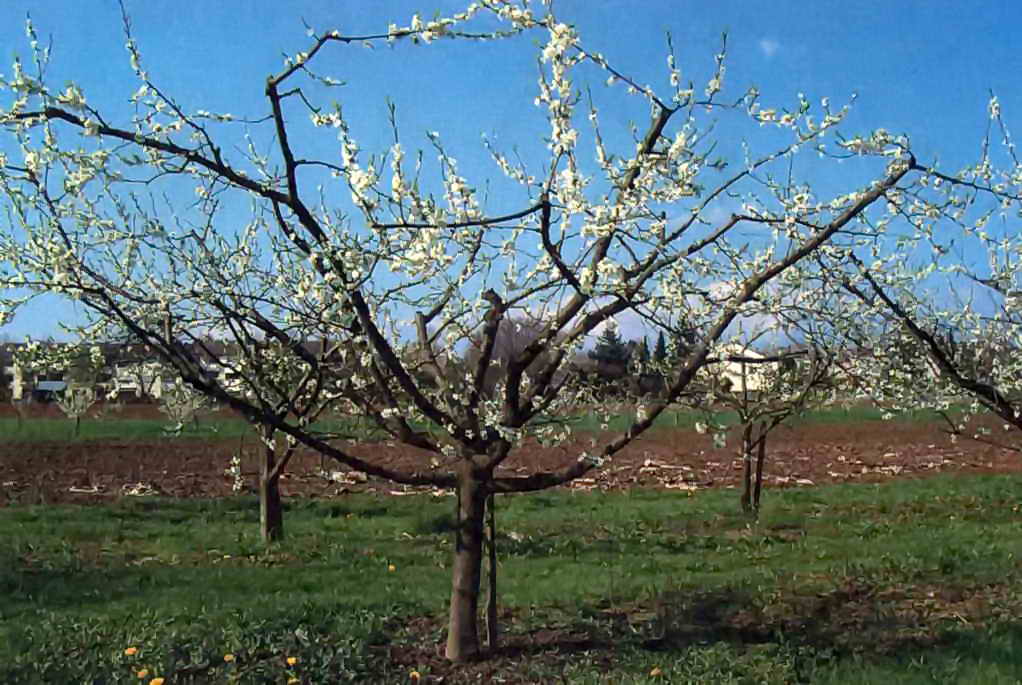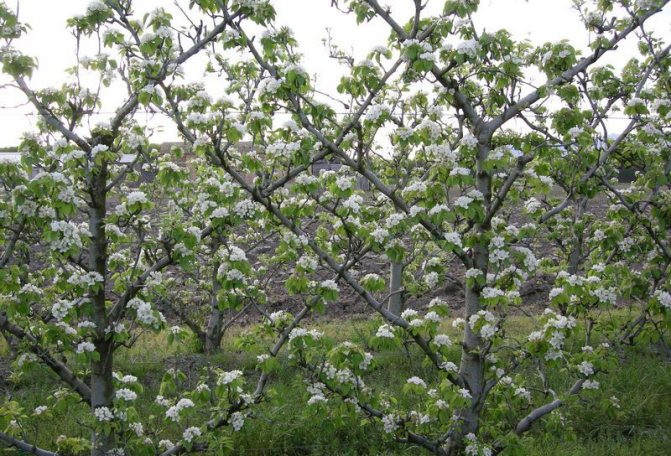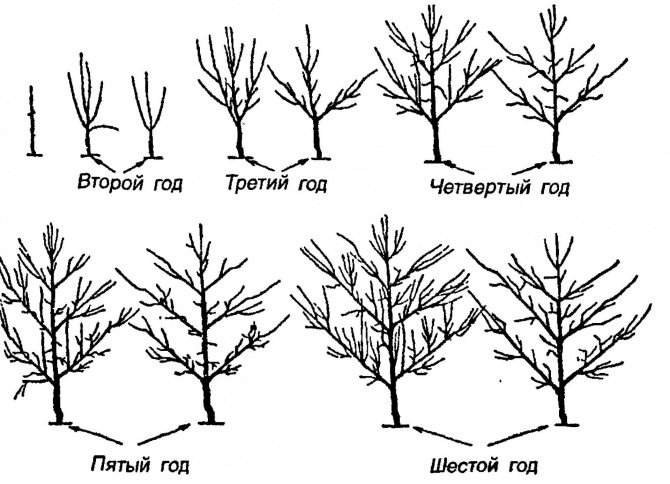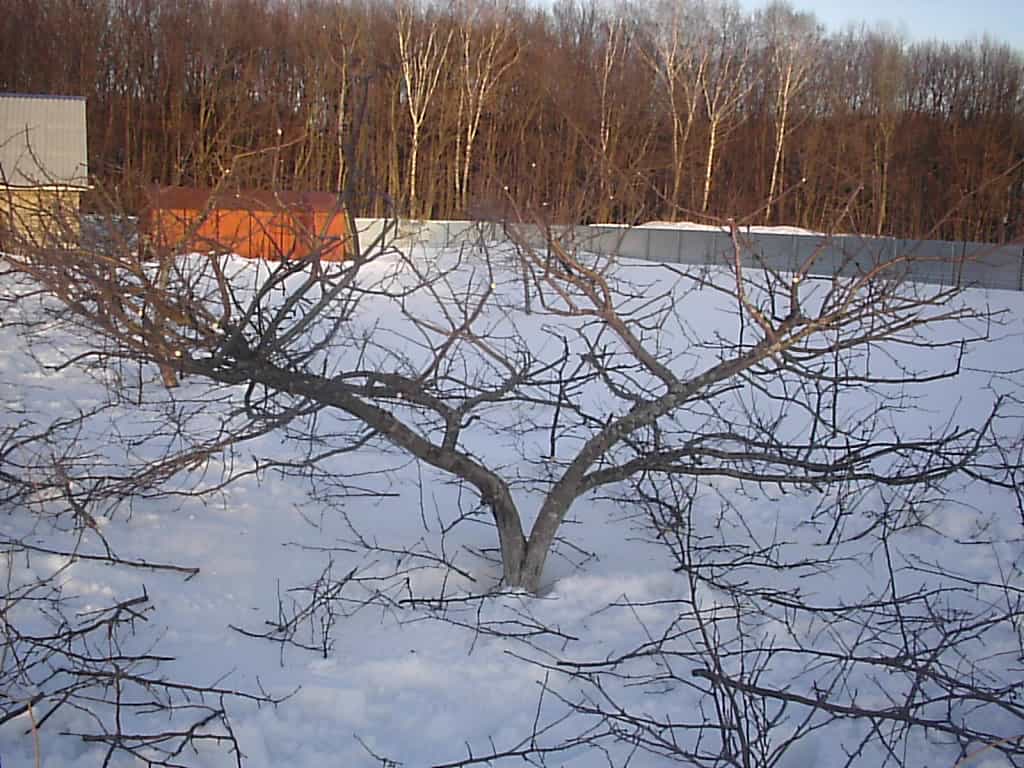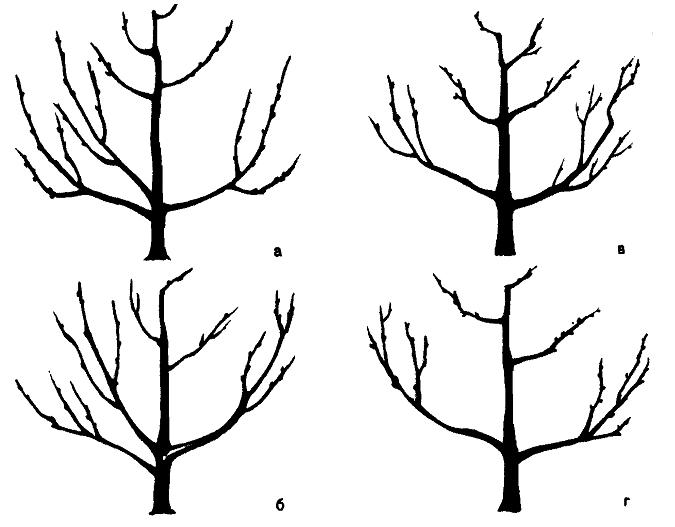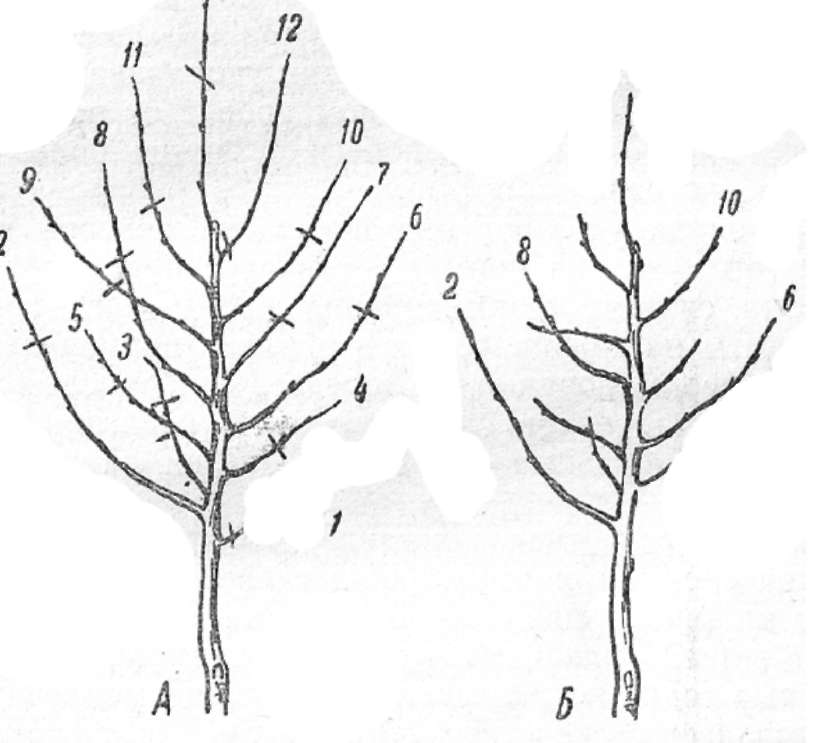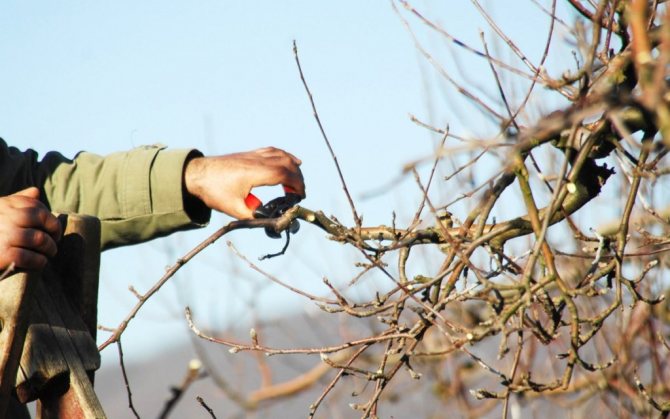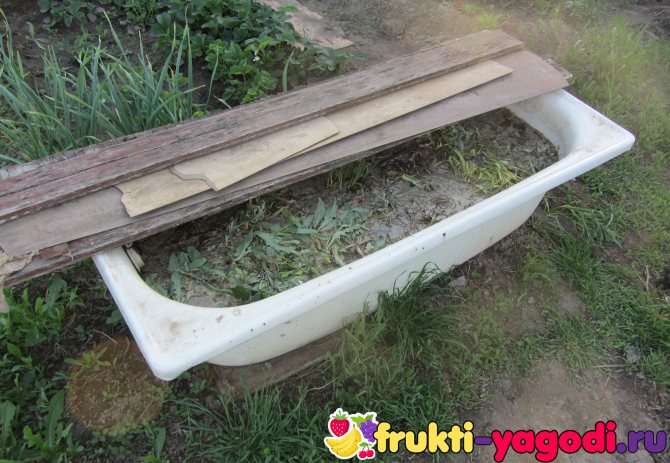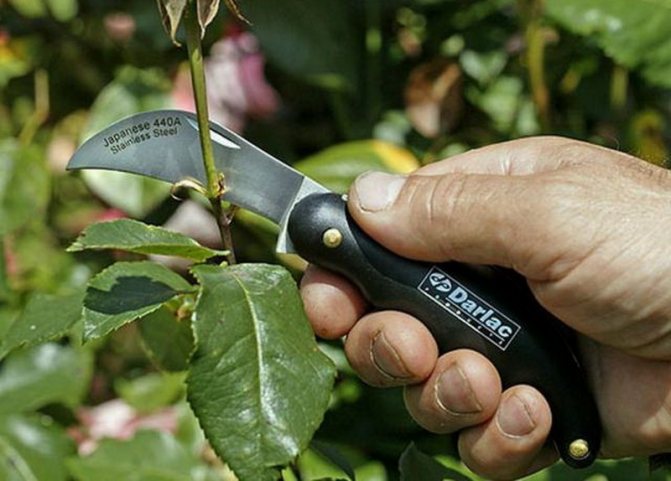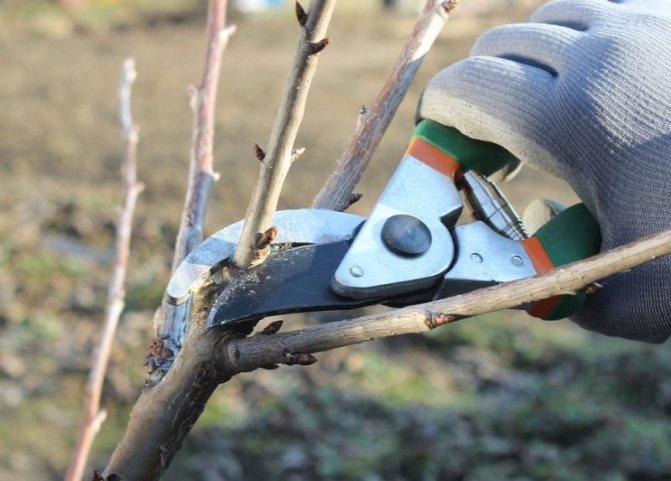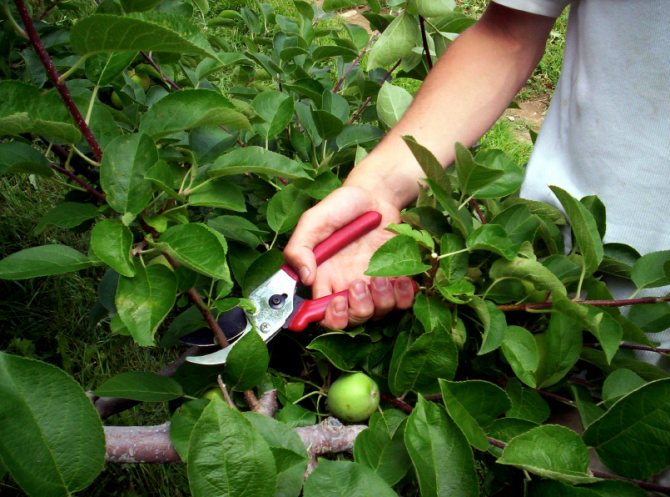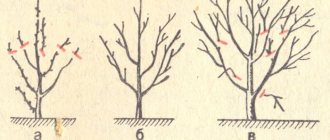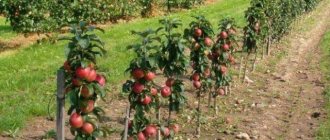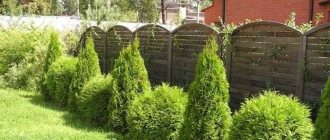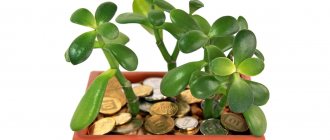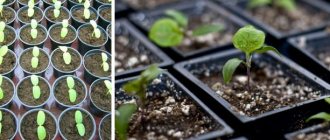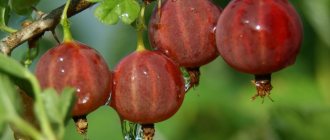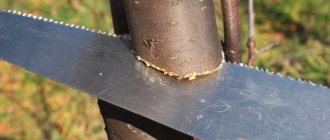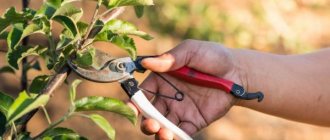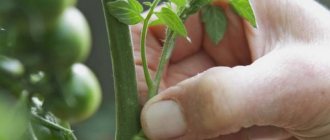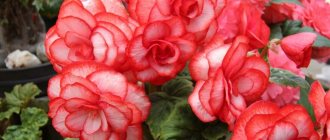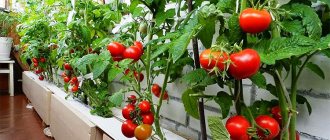The formation of the crown of an apple tree is a responsible and rather difficult part of caring for a plant. Practice shows that on a tree that develops naturally, the quality of the fruit deteriorates over time, winter hardiness decreases, fruiting ceases to be regular, and the branches lose strength and need support. At the same time, apples do not lose their taste and marketability on properly formed trees, the crown is able to withstand abundant harvests, and the regularity of fruiting corresponds to varietal characteristics.
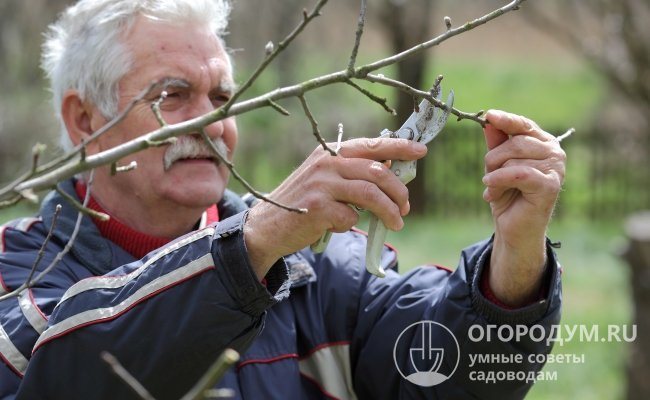
It must be remembered that pruning is a tough technique, and the fate of a tree largely depends on how correctly the gardener made decisions when removing this or that branch.
The essence of the procedure
The shaping procedure means special pruning, which allows you to normalize the supply of nutrients, increase yields, and reduce the likelihood of developing diseases.
The tree takes on a beautiful and well-groomed appearance, gives large fruits.
Why crop:
- due to the compaction of greens, various diseases develop, which negatively affects the appearance of apples and their taste;
- thickening of foliage can cause injury to thin branches, as a result of which poorly healing wounds appear, leading to oppression and death of the tree;
- small and unsweetened fruits are formed on an unkempt apple tree, since the sugars synthesized during photosynthesis are not distributed correctly, do not enter the pulp, but participate in the development of branches and green mass;
- unevenly developing shoots violate the load - the apple tree does not hold the weight of the fruit poorly;
- thickened and overgrown crown is inconvenient for harvesting.
Tools and materials required for work
In addition to studying the rules and recommendations, a novice gardener needs to acquire garden tools and some materials that will be needed for quick and convenient gardening. The minimum set includes:
- garden knife;
- secateurs;
- hacksaw;
- garden putty.
A garden knife is used to cut live branches up to 2 cm in diameter. It allows you to make even and smooth cuts that easily overgrow. However, working with a knife requires skill, so you need to work with it carefully.
The pruner is well suited for pruning thin branches and young shoots. It is more convenient and safer to work with it than with a knife.
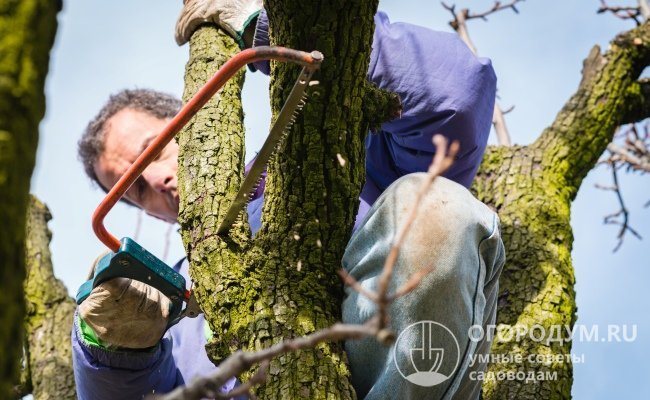

A hacksaw is used to remove large branches. You can also use a garden saw and a bow saw
It is recommended to use various putties for processing sections. Slices with a diameter of 1-1.5 cm do not need to be covered with a protective agent, since they quickly overgrow, and wounds with a diameter of more than 1.5-2 cm require mandatory processing. They are usually covered with garden varnish, which protects the wood from bacteria and fungi, promotes rapid healing. Also for these purposes, you can use paints based on natural linseed oil, bitumen and asphalt varnishes.
When is the first shaping done?
The first procedure is carried out a year after disembarkation, in the spring, from the beginning of March to the end of April
Previously, this is not worth doing, because the root system of a young apple tree is not yet strong enough to provide the crown with the necessary amount of nutrients.
The regrown shoots are cut off by a third. First, they get rid of the large upper branches, the lower ones affect minimally. The growing shoots are removed by a quarter.
You cannot cut off the main branches, as the plant will not be able to support its own weight.
Subsequent formation
Thorough shaping of a young apple tree is carried out every year for 3 years. In subsequent years, they are only engaged in rejuvenation.
In the spring pruned before foliage bloom. You cannot skip this period, otherwise sap flow from the sections will begin, the plant will recover for a long time. There is a high probability of oppression and the death of culture.
In summer the apple tree is pruned if it begins to dry out. The branches are cut by about a quarter - this allows a large number of young shoots to appear on the cuts in the next season, and also sets the direction of branching.
In autumn the procedure helps prepare the crop for winter, freeing the tree from excess weight. Shoots are removed 2/3 of the length.
Select the main conducting sprout. Branches of the second order, formed in the first season, depart from the conductor, and then the third order, the fruiting of which can be expected next year.
Basic concepts that a novice gardener needs to know
Before proceeding with the formation of the crown, a novice gardener needs to get acquainted with the basic terms and concepts in order to know what parts a tree consists of and what exactly needs to be pruned. For convenience, we present a table that contains the most important concepts:
| Term | Definition |
| Crown | The collection of all branches of different ages and sizes |
| Root collar | The place where the trunk goes to the root |
| Stam | Part of the trunk between the root collar and the first branch |
| Center conductor (leader) | Part of the tree trunk from the trunk to the apical axial shoot |
| First-order branches (skeletal) | Branches that are placed on the leader and form the skeleton of the crown |
| Second order branches | Placed on branches of the first order |
| Overgrowing branches (generative, fruitful) | Small branches that do not enter the crown frame - they form the main part of the crop |
| Competitors | Shoots that form from one or two buds located closest to the apical bud |
Recommendations
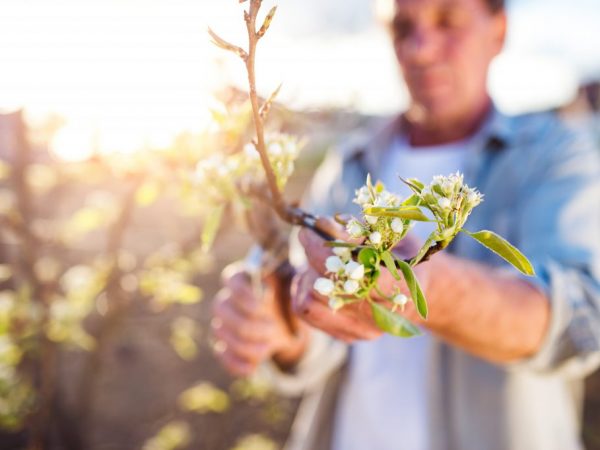

The health of the tree depends on the correctness of the procedure.
The formation of the crown is one of the mandatory points for increasing the quantity and quality of the crop. Many gardeners are not familiar with the rules of pruning, so they carry out the procedure incorrectly.
The following nuances must be observed:
- Shoots are cut only from strong and healthy plants. If the planted tree turned out to be frail, it takes root on the site with difficulties, then in the first season after planting it is better not to disturb it.
- If the haircut could not be carried out in a timely manner at the beginning of the growing season, then it is better to postpone it to the fall.
- For the first procedure, it is better to take a sharp knife. The use of a pruning shears is undesirable: young seedlings have thin branches, and a rough tool can break their structure.
- All sections must be treated with either oil paint or varnish. This is necessary to prevent damage to the exposed part of the wood by infection and insect pests.
- Do not cut too much and often.
Separately, you should talk about anti-aging pruning. The procedure is carried out for an old fruit crop, which is impossible to get rid of for any reason. After rejuvenation, you can count on maintaining yields and improving the quality of fruits.
The main task is to thin out and clean the central part.
The first step is to trim the trunk, then work on problem areas. Cut at an angle of 45 °. Be sure to cut off the branches if the angle between them and the trunk is straight.
Rejuvenation is carried out either in early spring (before sap flow), or in summer.It is important to remove exactly the upper part so that more sunlight is supplied to the center of the plant, which is necessary for high-quality ripening of the fruits.
If the procedure is carried out in the summer, then a lot is cut off: the main branches by ¾, all zones of thickening are cleared. After the performed manipulations, the tree is watered.
Shaped trees, how to shape a tree
Tree shaping is a suggestion for the assertive and gardener who likes to experiment. A properly formed tree takes on an individual character. By pruning a tree, the gardener plays the role of a stylist, transforming the plant into a unique piece of art as a distinctive plant.
Trees intended for formation should be characterized by: good health, regular cut, not very fast growth, good condition after a strong cut, the ability to release numerous new shoots after pruning, frost resistance.
Species particularly suitable for molding include: linden, hornbeam, maple, hazel, plum, willow, and fruit trees such as apple and pear.
Tree formation: when and how
Trees must be formed in the first year after planting. If the plants were planted in the fall, the first cut is made in the spring, and when planting in the spring, it is also better in the spring. We form twigs when they are young and not woody. We make cuts on sunny and dry days.
It is not recommended to carry out this treatment on rainy days, as high air humidity contributes to bacterial and fungal infections. The main deciding factor for the cut period is the flowering time. From February to the beginning of the growing season, trees are cut, which bloom in summer and autumn.
Ornamental trees that bloom in spring are cut immediately after flowering. It is recommended to shorten the shoots gradually, cutting them in short sections. Care should be taken when choosing and cutting, to get started with detailed information about each plant.
Running trees on metal frames
Garden shops stock frames in several patterns, but if you want a tree with a unique shape, it's best to make your own. It is necessary to plan the shape of the frame and then make it out of galvanized wire and metal rods.
We are planting a tree with a frame set in the ground. Growing shoots are sprinkled on the supports, we bend or attach, removing those that protrude beyond the frame. Trees formed by the walls of buildings or massive fences are interestingly presented.
In this case, casting is also done on the racks. Forming trees of a certain shape, unfortunately, is not a short-term and simple process, but it is worth trying to find a tree in the garden that will be the pride of every owner.
Pruning schemes
The shaping shearing scheme involves restoring the balance between old and young branches that have grown in the previous growing season. As a result, the crown takes on a shape that is optimal for abundant and high-quality fruiting.
Tiered sparse
Select 5 or 6 strong branches extending at a large angle from the conductor.
- The first tier, located at a height of 50 cm from the trunk, should consist of 2 - 3 processes;
- The second is even higher - 50 cm.
Due to the significant spacing between the tiers, a sufficient level of illumination of the fruits and green mass is ensured. A solid frame is formed at the tree. The scheme has only one drawback: it is difficult for an inexperienced gardener to calculate the optimal inter-tier spacing.
Spindle shape
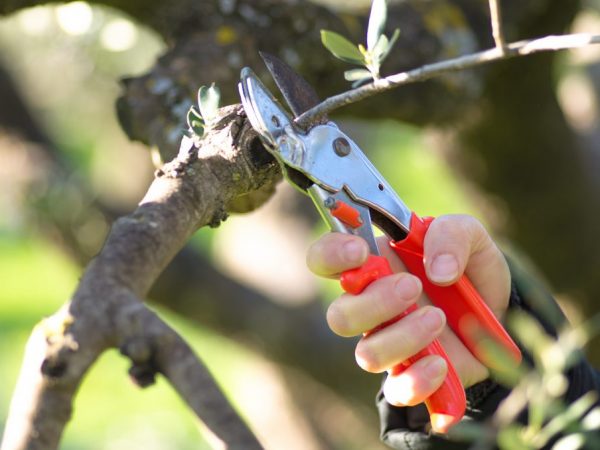

Pruning improves fruiting
The scheme involves the removal of the central conductor to the kidney. The branches of the second level are cut to the preferred length.
The procedure takes 3 years:
- The one-year-old plant is pruned by a third. The branches located in the middle part are folded back;
- The guide shoots and branches are pruned for laying the next level;
- When the apple tree reaches a height of 2.5 m, the top is cut off from the central process above any branch that branches out to the side.
If the lateral branches grow quickly, then the main shoot-guide can not be touched. Remove it when it stretches 70 cm or more in length.
Cup shape
The scheme is best used for semi-dwarf varieties.
The principle is this:
- three sprouts of the first level depart from the trunk at an angle of 120 °;
- paired branching is formed by cutting off branches from the guide shoot at a distance of 40 cm;
- to make the crown a bowl, in the third season after planting, when the frame is strengthened, the top above the main branch is cut off from the central conductor;
To prevent thickening of the central part of the crown, branches directed to the center are cut off annually, leaving only short ones suitable for fruiting.
Vertical palmette
In order to form the crown, the processes are first selected from which the rows are formed. Inter-row and side branches are cut off. As the seedling develops, branches are removed that are not directed longitudinally, but to the center of the plant.
It is convenient to harvest from such an apple tree. But it must be borne in mind that constant cutting leads to a decrease in yield.
Bushy
Almost all shoots are cut off from the seedling, leaving only 5 or 6 main ones, extending from the trunk. In the next season, in the form of a Christmas tree, with observance of symmetry, annual branches are completely removed by half the length. The main one is also cut off.
If the apple tree is formed by a bush, it is easier to harvest by hand.
It is not necessary to form varieties that are characterized by weak branching in this way. As a rule, the method is suitable for semi-dwarf species.
Whorled-tiered
- At the first level from the trunk, 5 shoots are taken from adjacent buds.
- On the second, 2 branches are left that have grown through the bud.
The space between the tiers should be 50-60 cm. The guide is not touched, it is allowed to develop as a lateral branch.
Varieties of crowns
Crown shapes of fruit trees can be divided into two groups:
- natural;
- artificial.
Natural crowns, when formed, retain approximately the same appearance as that of apple trees of a similar variety, growing without interference. Such crowns are leader and leaderless. On the leader ones there is a central conductor, and on the leaderless ones it is removed after the required number of branches has been laid, or the tree reaches the desired height.
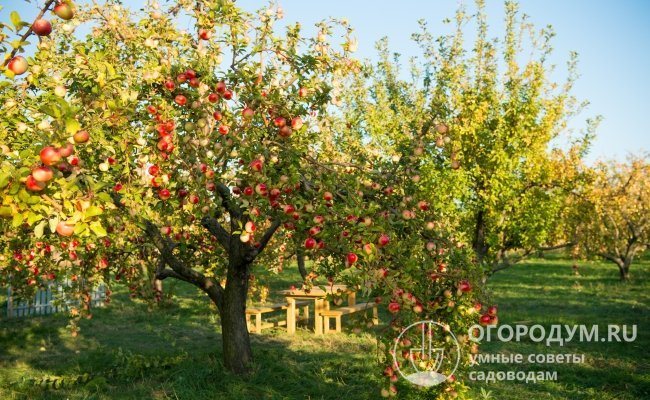

The number, direction of growth and length of branches are adjusted taking into account the natural growth of the tree
Artificial crowns are formed forcibly, by fixing the branches in a certain order on special supports.
Common mistakes
It should be formed responsibly, in accordance with all the rules. If the procedure is performed incorrectly, then it will take a lot of time and effort to correct the errors. Sometimes the tree turns out to be irrevocably ruined.
Symptoms of improper care of a young culture:
- Overgrowth due to insufficient pruning. A plant that has lived for one year should have 4 - 5 main shoots at least 50 cm long.
- Inactive growth due to the removal of the main, and not competing ones. It is necessary to identify and cut off branches that are not inferior in developmental activity to the main process.
- The neglect of trees is a problem that is important to get rid of immediately. If you do not take care of them, then their green zone will become excessively thickened, the fruits will lose their commercial appeal and nutritional value.
For the apple crown to form, you need to wait several years. In the first seasons, it is necessary to achieve strong growth. The further creation of the correct form depends on it. For a young apple tree, optimal development conditions should be created: regular watering, feeding, removing weeds.

